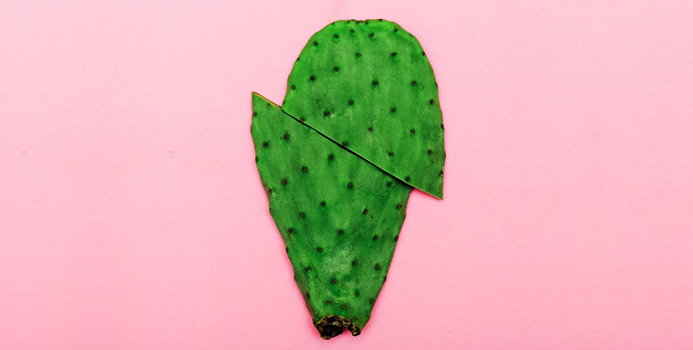What comes to mind when you think of cactus? Do you conjure up images of the desert? Or are you reminded of that prickly potted plant in your living room? What many people have yet to discover is that cactus is not only edible, it is delicious and incredibly healthy. Cactus is frequently eaten in Central America (nopales, as cactus is also called, are very popular in Mexican cuisine), the Middle East, India, Australia, North Africa, and several countries in Europe.
Fresh nopales can be found year-round at specialty food markets, ethnic grocery stores, and at farmers’ markets. You will want to select pale green nopales that are firm and wrinkle-free.
What Do They Taste Like?
Cactus has a very mild, unique flavor that has been described by some as being similar to green beans, asparagus, zucchini, or bell peppers (all delicious!) but slightly more acidic. They can also be a bit slimy — much like okra — which makes them optimal for thickening up your favorite sauces or soups.
If you can’t find fresh nopales where you live, you could easily find them canned or jarred (cooked), usually packed in a brine (pickled) or in water.
Beneficial Nutrients
One cup of raw nopales (86 grams) contains 14 calories, 0 grams of fat, 3 grams of carbohydrates, 2 grams of fiber, and 1 gram of protein. One cup also provides 20 percent of the Daily Value for manganese, 14 percent of the Daily Value for calcium, 13 percent of the Daily Value for vitamin C, and 11 percent of the Daily Value for magnesium. Since it is so low in calories, adding cactus to an overall healthy eating pattern is a great way to expand your recipe repertoire without expanding your waistline.
In addition to being incredibly low in calories but high in fiber, cactus also provides antioxidants, which help fight off damaging free radicals. Cactus contains large concentrations of two specific types of antioxidants: betalains and flavonoids. Both of these groups of antioxidants have been shown to help fight disease.
How to Cook Nopales
Pro Tip: Wear thick gloves or oven mitts when removing the thorns from the cactus paddles to prevent getting poked. Or, hold them with kitchen tongs while you remove the thorns.
-
Place your cactus paddle on a cutting board and use a sharp knife to trim off the entire outer edge. Next, scrape any thorns, spines, or eyes off by running your knife across both sides of the paddles, moving back and forth. You could also use a vegetable peeler to remove these inedible bits.
-
Once you’ve removed those spines and trimmed away any bad spots, rinse the cactus paddles well, return them to your cutting board, and slice into strips or dice them up.
-
Now, your nopalitos are ready for cooking! You can either grill or boil them, or toss them into a soup to thicken it up and add a boost of nutrition, or add them to your morning eggs. To boil them, bring a large pot of salted water to a boil. Boil, uncovered, for 8-10 minutes or until they are tender. The nopales will produce a foam and excrete a sticky substance. Watch the pot to skim off any foam.
-
One of my favorite ways to use nopales is to grill the strips and use them in tacos. You can also add them to salads, stews, or casseroles.
-
You can also grill the entire paddle whole. After you have trimmed and rinsed it, simply make 3-4 slits on the nopal, brush with a little olive oil or canola oil, and grill them for approximately 3 minutes on one side, flip it, and grill for about 3 minutes on the other side. Voila!
[Image via Shutterstock]



